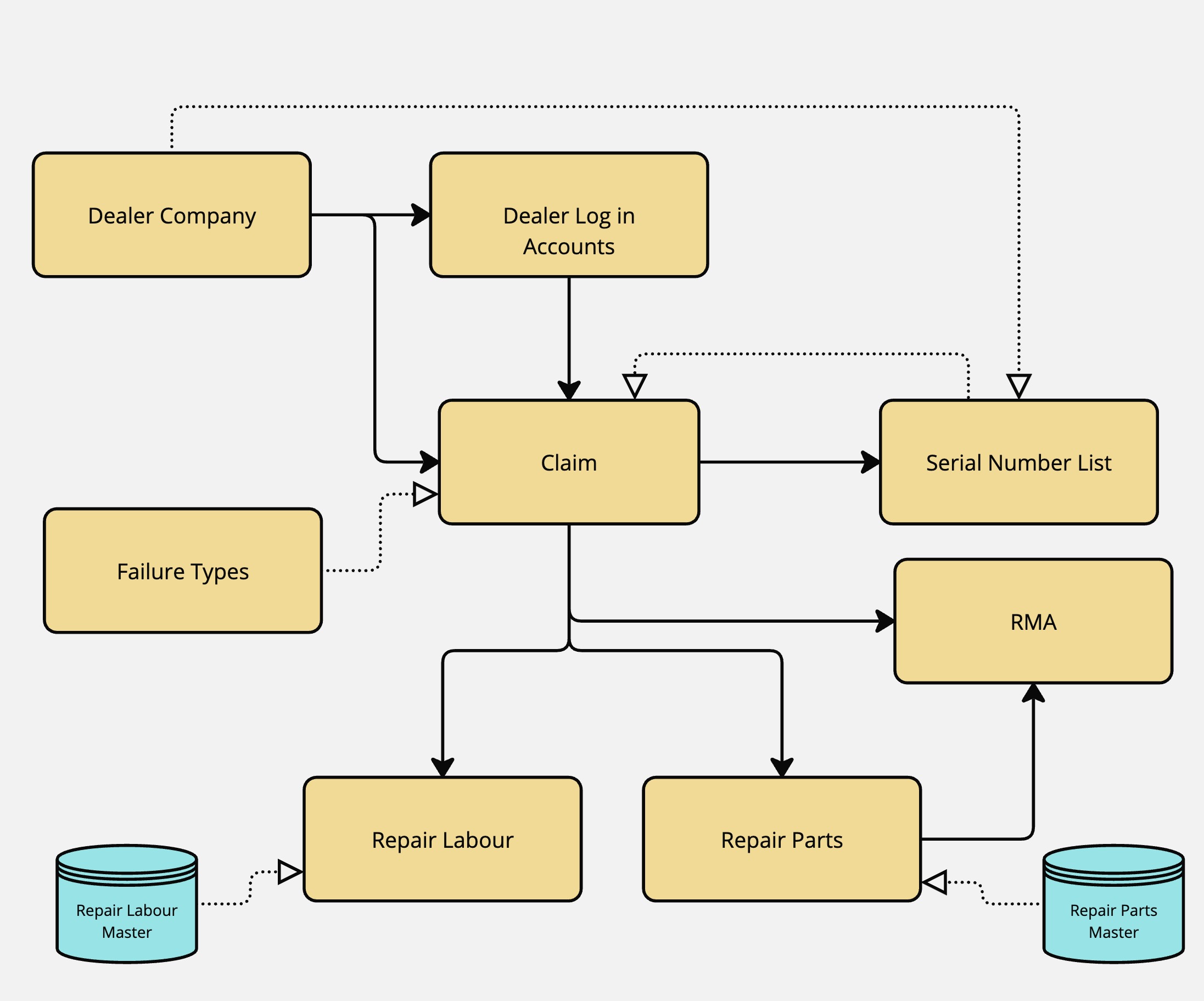Introduction
Claims Template is a collection of robust and user-friendly workflows designed on TeamTracks platform to streamline onboarding of customers looking for a Claims process. The template encompasses a wide range of functionalities encompassing management of the claim submission process, issuing RMAs and knowledgebase articles.
This collection of articles provides a comprehensive review of the capabilities and features of the TeamTracks Claims Template. This template is designed for workflows that require two distinct interfaces:
1. Client Portal: Enables end-users submit claims, see issued RMAs and check warranty info on their products.
2. Agent Portal: Provides agents with a centralized platform for managing all claims, RMAs, KB articles and warranty information.
Admin Portal
This is the admin configuration portal where this Claims template has been configured with zero coding. It provides a flexible foundation for your Claims process, allowing you to modify and tailor it to your specific business requirements. The template is ready-to-use but each of its components is fully configurable and customizable.
Claims Process FAQ
Who can use the Claims Process?
The claims process can be utilized by organizations whose processes allow for the customer or their agent to perform repairs on the product and claim reimbursement with the company.
How can the customer claim reimbursement?
The customer adds parts and labor elements expended in performing the repair. The parts are added from a master parts table (a list of spare parts), which has the price and description of the part. Labour is added from a master labor table which has the standard repair operations defined (like a Standard Repair Times table) which specifies how much time is allocated for each operation.
A typical example is found in the automotive industry, where the customer (via the dealer) is making a claim for repair of a faulty brake caliper. The parts used are the brake caliper assembly, lock nut and washer and a can of WD40. If a third party part is used, the customer can also attach an invoice. Labour include R/R wheel and R/R Caliper. Each labour item has a defined SRT, which is used to calculate the total labor reimbursement, based on the customers labor rate.
Alternatively, the claim process can be configured such that the customer can enter a total dollar amount for reimbursement instead.
Can i have different labor rates and parts discounts for each customer?
The claims process out of the box defines labor rates per customer. Parts pricing discount can configured if required at the customer level.
Can i RMA the parts replaced?
Yes, you can choose which parts to RMA from the claim.
Will the system automatically calculate taxes?
The configuration can be extended to automatically add taxes to the claimed amounts.
I do not have a claim appeal process. Can i disable it?
Yes, the claim appeal workflow can be removed with minimal effort.
Why should i use the initial and final approval stages for a claim? Can’t i just approve the claim once?
Although different industries treats this aspect of the process differently, providing an initial approval based on an estimate and final approval and reimbursement based on the actual work performed is a best practice that lowers total cost and increases overall customer satisfaction.
That said, the process can be modified to work with only one approval.
Claims Workflow

End to End Claims workflow
RMA Workflow

End to end RMA workflow
Key Features
Defined Workflows: Well defined warranty claims process, including claim approval and rejection, appeals process, RMA management, and warranty data management.
Data Management: Includes comprehensive tables for managing serial numbers, parts, and labor, facilitating accurate and efficient data management.
Integration Capabilities: Supports data integration with external systems through APIs, enabling seamless data exchange with ERP and other systems.
Easy customer management: Create customer companies and one or more user accounts associated with each company. The template can be extended to support self service account request and automated account request approval.
Reporting and Analytics: Provides valuable insights into trends, performance metrics, and key performance indicators (KPIs).
Here is a high level view of the template, depicting predefined tracks and their relationships.

